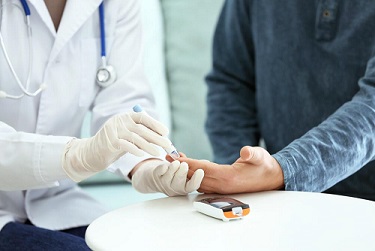Signs Of Diabetes and How It’s Tested and Looked After
A lot of people tend to joke around with sweets and say they can “choose diabetes” when they decide to eat a ton of sugary food. However, diabetes is indeed a real condition that affects a significant portion of the world’s population. More importantly, diabetes can lead to more serious conditions if its symptoms aren’t managed from the beginning. Thankfully, there do exist systems and mechanisms in modern medicinal practices that allow quick diagnosis of diabetes amongst patients. This means it’s important for patients, diabetics, or those who think they have diabetic symptoms to understand it’s essential to get themselves checked immediately before symptoms get worse for proper management. However, what are the things to look out for?
 Diabetes 101: What Are The Signs To Look For
Diabetes 101: What Are The Signs To Look For
With the above in mind, it’s important to remember that diabetes isn’t simply about “having high blood sugar.” These levels, when left unmanaged, can leave detrimental or fatal effects to your body overall – all of which require proper care and maintenance. In order for you to be able to understand the impact of diabetes on your body much better, and to find places that sell diabetic test strips, it may help to start with the basics. Just what are signs of diabetes and how it’s tested? How will you be able to look after diabetes once it’s diagnosed?
 What To Do During Diagnosis?
What To Do During Diagnosis?
It’s noted that a lot of symptoms of Type 1 diabetes actually manifest suddenly, which is why a lot of people and professionals focus on checking levels of blood sugar instead. It’s important, however, that screening be done after meeting some “guidelines” as sometimes symptoms of other types of diabetes manifest as other conditions.
- If you have a BMI (body mass index) greater than 25, you should get checked regardless of age. This is especially if you have history of heart disease or diabetes, have a sedentary lifestyle, have odd cholesterol levels, or high blood pressure.
- If you’re older than 45.
- If you’ve had gestational diabetes, or if you’ve been diagnosed with prediabetes.
What Are The Tests For Diabetes And Prediabetes?
There are various kinds of tests available to take to identify if you have diabetes or prediabetes. Some procedures require special conditions such as preliminary fasting. Some methods of testing include:
- A1C or Glycated hemoglobin test doesn’t require fasting, although it does help indicate your blood sugar level average for the past two (2) to three (3) months. This measures the blood sugar percentage on your hemoglobin, which is the protein that carries oxygen in red blood cells. If your A1C level is higher than 6.5 on two (2) different tests, you likely have diabetes. Meanwhile, getting 5.7 to 6.4 indicates prediabetes.
- Random blood sugar tests also work by getting your blood sugar at a random time. A blood sugar level of 200 milligrams per deciliter or higher means you may have diabetes.
- Fasting blood sugar test, as the name implies, require an overnight fast. Fasting blood sugar level that’s around 100 to 125 mg/dL implies prediabetes, while anything higher means diabetes.
- Oral glucose tolerance test also needs fasting overnight, with your fasting blood sugar gauged. You will drink a sugary liquid, wherein your blood sugar levels will be once again tested within two hours. Getting around 140 to 199 mg/dL means you may have prediabetes, and anything higher indicates diabetes.
Treatment For Diabetes? Is This Possible?
Just because you have diabetes doesn’t mean it’s not something that can be managed or treated. An important aspect of dealing with diabetes is handling it the way you aspire for overall health.
- Careful monitoring of blood sugar: It’s important that you do all of these treatment suggestions while monitoring your blood sugar properly. Depending on what your doctors prescribe, you can record and check your blood sugar especially if you’re taking insulin. This at least helps ensure your blood sugar are at desired levels. Be wary of sudden spikes or dips on your blood sugar level and take note of those instances as well.
- Insulin based therapy: Some people with diabetes rely on insulin therapy in order to properly manage their blood sugar levels. There are different kinds of insulin, such as intermediate options, long-acting, and rapid-acting insulin. Your doctor will often prescribe the option that suits you best, but insulin needs to be injected through an insulin pen or a syringe. It can’t be taken orally as your stomach acids can eliminate the medicine.
- Other medications, or oral medications: Some specific medications are built to stimulate your pancreas so your body can produce more insulin. Sometimes there are oral medication too that can inhibit the release and production of glucose in your system.
- Transplant of pancreas: This is sometimes needed as one of the last options as this may eliminate the need for insulin therapy. However, you may need immune-suppressing drugs so organ rejection can be avoided.
Bariatric surgery: This is another option that can greatly help people who have a BMI higher than 35, or are obese. - More physical activity: One of the best ways to tackle and manage diabetes naturally is to actually get more regular physical activity. This is because exercise actually lowers your blood sugar levels as sugar gets moved into your cells for energy. This also increases your insulin sensitivity, which means less insulin is required for your body to get sugar within your cells. Things such as biking, swimming, or walking can greatly help with this.
- Healthier eating practices: Aside from physical activity, it also helps if you start eating healthier in order to help manage your sugars better. There’s no “specific” diet as it really depends on what your doctors will suggest. However, it’s recommended you have one that focuses on whole grains, lean proteins, and fruits and veggies as they are low in calories and fats, but high in fiber and nutrition. This is also often the best kinds of meals for families, regardless if they have diabetes or not.
The Bottomline: Diabetes Testing And Care For Long Term Health
When you have diabetes, you need to be able to take care of your body properly in order to avoid complications. This involves knowing about the symptoms just as you should know about how to treat and regulate your blood sugar levels. As such, knowing the above not only puts you in a position that can help you in times of trouble, but you can use the information to help save others with diabetes or might have diabetes. If you feel as though your symptoms or the symptoms of someone you know are getting worse, do take this opportunity to seek the help of a medical professional immediately to avoid endangering your health. And if you’re already undergoing treatment, remember to always keep an eye out for the above while you keep yourself healthy.
